 1998 Toyota Land Cruiser (J105) Dimensions, Size & Specs
1998 Toyota Land Cruiser (J105) Dimensions, Size & SpecsMeasurements of the 1998 Toyota Land Cruiser, engineered for optimal performance and comfort
| Dimensions | |
|---|---|
| Length: | 4890 mm192.5 in16.0 ft |
| Width: | 1920-1940 mm75.6-76.4 in6.3-6.4 ft |
| Height: | 1850-1890 mm72.8-74.4 in6.1-6.2 ft |
| Weight Specifications | |
| Curb Weight: | 2360 kg5203 lbs |
| Maximal permitted Weight: | 3180 kg7011 lbs |
| Tire Specifications | |
| Tire Size: |
|
The Toyota Land Cruiser (J105) generation, produced from 1998 to 2005, represents a robust and versatile SUV within Toyota's renowned Land Cruiser lineup. Designed primarily for off-road capability combined with everyday utility, the J105 offers substantial size and durability. Measuring 4890 millimeters (192.5 inches) in length, this SUV strikes a balance between spaciousness and maneuverability. Its width ranges from 1920 to 1940 millimeters (75.6 to 76.4 inches), providing a wide stance for stability on various terrains. The vehicle's height varies between 1850 and 1890 millimeters (72.8 to 74.4 inches), contributing to its commanding presence on the road. The J105's curb weight is approximately 2360 kilograms (5205 pounds), which supports its rugged construction and off-road readiness without sacrificing driving dynamics. It has a maximum permissible weight of 3180 kilograms (7010 pounds), indicating its capability to carry heavy loads and additional cargo with reliability. Equipped with tire sizes of 235/85 R16LT, this Land Cruiser maintains excellent traction and durability for diverse driving conditions, enhancing its off-road and on-road performance. The J105 generation remains a popular choice for SUV enthusiasts seeking a durable vehicle with proven reliability, excellent ground clearance, and spacious dimensions suitable for both passengers and cargo. It is ideal for those requiring a dependable vehicle for challenging environments or daily use with ample space and strong presence.
Discover the standout features that make the 1998 Toyota Land Cruiser a leader in its class
Have a question? Please check our knowledgebase first.
The Toyota Land Cruiser J105, produced from 1998 to 2005, has exact exterior dimensions that reflect its robust SUV design. Its length measures 4890 mm (192.5 inches), providing substantial road presence and interior space. The width varies slightly from 1920 mm to 1940 mm (approximately 75.6 to 76.4 inches), influenced perhaps by trim levels or additional exterior features like mirrors or body cladding. The height ranges between 1850 mm and 1890 mm (about 72.8 to 74.4 inches), contributing to its commanding stance and off-road capability. These dimensions emphasize the Land Cruiser's blend of spaciousness and rugged functionality for both on-road and off-road driving.
The Toyota Land Cruiser J105 has a curb weight of 2360 kilograms (about 5205 pounds), which encompasses the vehicle's weight without passengers or cargo but with all standard equipment and a full fuel tank. Its maximum authorized weight, or gross vehicle weight rating (GVWR), is 3180 kilograms (roughly 7010 pounds). This weight limit dictates the maximum safe weight of the vehicle once fully loaded with passengers, cargo, and any additional equipment. This robust weight capacity aligns well with its role as a heavy-duty SUV capable of towing and handling demanding off-road conditions with ease.
The Toyota Land Cruiser J105 is equipped with tire sizes of 235/85 R16LT. This means the tires have a width of 235 mm, an aspect ratio of 85 (indicating sidewall height as 85% of the tire width), and fit on 16-inch rims. The 'LT' designation means these are Light Truck tires designed for durability and load-carrying. These tires provide excellent off-road performance due to their substantial sidewall height, which allows for better shock absorption and traction over uneven terrain. The size combination also supports the Land Cruiser's capacity to navigate rough trails, mud, and rocky surfaces while maintaining comfort and stability on highways.
The Toyota Land Cruiser J105, with a length of 4890 mm (192.5 inches), width between 1920 and 1940 mm (75.6 to 76.4 inches), and height of 1850 to 1890 mm (72.8 to 74.4 inches), is considered a large SUV. Standard garages in many countries typically measure about 2.4 meters (8 feet) in width and 4.8 to 6 meters (16 to 20 feet) in length. While the Land Cruiser fits lengthwise into most standard garages, its width is close to or slightly exceeds the standard garage width, especially when accounting for door clearance and opening space. Additionally, the height is higher than average, so taller garage doors or ceilings are necessary. Owners with smaller or older garages should verify their garage dimensions before assuming the Land Cruiser will fit comfortably.
The Toyota Land Cruiser J105 is renowned for offering a spacious and comfortable interior, well-suited for families and off-road adventurers alike. Its large exterior dimensions translate into ample cabin space, including generous legroom and headroom for front and rear passengers. The design emphasizes durability and practicality without sacrificing comfort, featuring high-quality materials and thoughtful ergonomics. The elevated roofline and wide body contribute to a roomy feel inside the cabin. Additionally, the Land Cruiser often came with seating arrangements for seven or eight passengers, depending on configuration, making it ideal for larger groups or extended trips. The balance between utilitarian toughness and passenger comfort is a hallmark of this generation.
Compared to its predecessor, the Land Cruiser J80 (produced from 1990 to 1997), the J105 generation introduced in 1998 generally maintains similar dimensions but with subtle refinements. The J80 was slightly shorter and narrower, with an approximate length around 4790 mm (188.6 inches) and width about 1880 mm (74 inches). The J105 extends its length marginally to 4890 mm (192.5 inches) and broadens in width to between 1920 and 1940 mm (75.6 to 76.4 inches), offering increased interior space and road stability. Height also saw a slight increase, enhancing headroom and rugged stance. These dimensional changes contribute to a more modern feel and improved comfort while retaining the rugged capabilities that characterized the J80.
During the 1998-2005 period, the Toyota Land Cruiser J105 stood out as one of the larger and more capable full-size SUVs. Compared to rivals like the Nissan Patrol, Mitsubishi Pajero, and early versions of the Lexus LX, the Land Cruiser's dimensions were competitive, often offering more length and weight capacity. Its length of 4890 mm (192.5 inches), width up to 1940 mm (76.4 inches), and significant curb weight contributed to a robust road presence and excellent off-road capabilities. The tire size and rugged construction further emphasized its durability. While some competitors might have offered slightly more interior tech or luxury, the J105 balanced comfort with unmatched reliability and off-road performance, making it a favorite among SUV enthusiasts and those requiring extreme durability.
The height of the Toyota Land Cruiser J105 ranges between 1850 mm and 1890 mm (72.8 to 74.4 inches), which correlates to an elevated ground clearance essential for off-road capability. While exact ground clearance figures can vary with tire size and suspension setup, the J105 typically offers a clearance around 215 mm (8.5 inches). This substantial height and clearance help it navigate rough terrains, obstacles, and deep water crossings without damaging the undercarriage. The tall stance also allows for better approach and departure angles, meaning the vehicle can climb or descend steep inclines without scraping the bumpers. Overall, its height and design are optimized for robust off-road performance while maintaining on-road stability.
The Toyota Land Cruiser J105 generally comes equipped with a fuel tank capacity of approximately 93 liters (about 24.6 gallons). This generous fuel capacity supports long-distance travel and off-road expeditions by reducing the frequency of fuel stops, which is crucial in remote areas where refueling options may be limited. Paired with its fuel-efficient diesel or gasoline engine variants for the time, this large tank offers a significant range, often exceeding 700 to 800 kilometers (435 to 500 miles) depending on driving conditions and load. The capacity encourages confidence for adventure travelers who need both durability and uninterrupted performance over extended journeys.
The Toyota Land Cruiser J105 was offered in several configurations depending on market and customer needs. Common variants included short wheelbase (SWB) and long wheelbase (LWB) models, with the LWB offering increased cargo and passenger space, often fitting seven or eight occupants. Engine options varied from inline six-cylinder petrol engines to turbocharged diesel engines, optimized for different regions and emission standards. Trim levels ranged widely from basic utilitarian models focused on durability and off-road capability, to more luxurious versions equipped with leather interiors, premium audio systems, and advanced safety features. The flexibility in configurations enabled the J105 to serve diverse purposes, from rugged workhorse to upscale family SUV.
Discover similar sized cars.
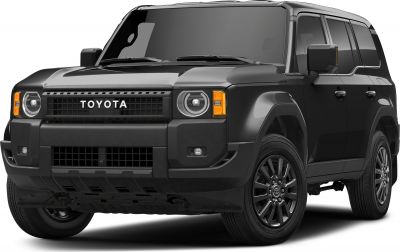
| Production: | 2021-present |
|---|---|
| Model Year: | 2021 |
| Length: | 4950-5115 mm194.9-201.4 in |
| Width: | 1980 mm78.0 in |
| Height: | 1890-1940 mm74.4-76.4 in |
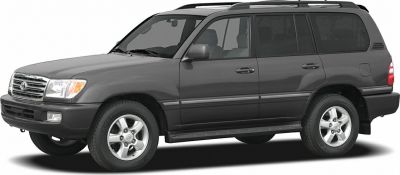
| Production: | 2002-2007 |
|---|---|
| Model Year: | 2002 |
| Length: | 4890 mm192.5 in |
| Width: | 1940 mm76.4 in |
| Height: | 1859-1880 mm73.2-74.0 in |
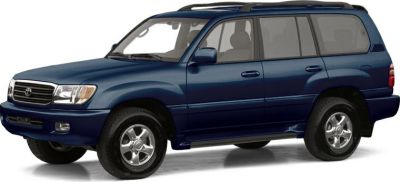
| Production: | 1998-2002 |
|---|---|
| Model Year: | 1998 |
| Length: | 4890 mm192.5 in |
| Width: | 1940 mm76.4 in |
| Height: | 1860 mm73.2 in |
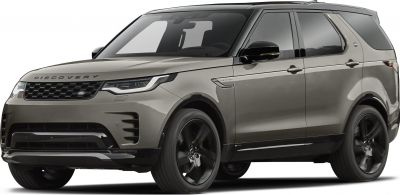
| Production: | 2020-present |
|---|---|
| Model Year: | 2021 |
| Length: | 4956 mm195.1 in |
| Width: | 2220 mm87.4 in |
| Height: | 1888 mm74.3 in |
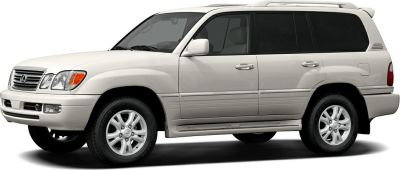
| Production: | 2005-2007 |
|---|---|
| Model Year: | 2006 |
| Length: | 4890 mm192.5 in |
| Width: | 1941 mm76.4 in |
| Height: | 1850 mm72.8 in |
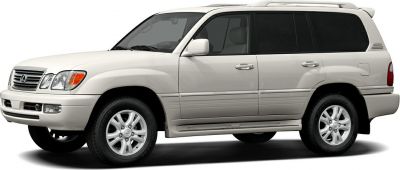
| Production: | 2002-2005 |
|---|---|
| Model Year: | 2003 |
| Length: | 4890 mm192.5 in |
| Width: | 1940 mm76.4 in |
| Height: | 1850 mm72.8 in |
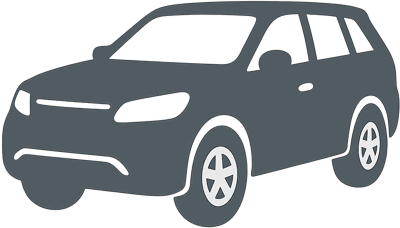
| Production: | 2020-present |
|---|---|
| Model Year: | 2020 |
| Length: | 4835 mm190.4 in |
| Width: | 1900 mm74.8 in |
| Height: | 1785 mm70.3 in |
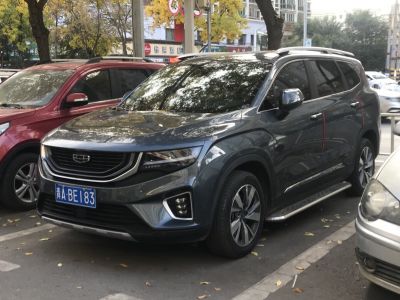
| Production: | 2020-present |
|---|---|
| Model Year: | 2020 |
| Length: | 4835 mm190.4 in |
| Width: | 1900 mm74.8 in |
| Height: | 1780 mm70.1 in |
